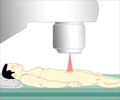A joint campaign has successfully managed to reduce the number of inappropriate cancer scans for low-risk prostate cancer patients over the past decade in Sweden.

"In the United States we have guidelines about the overuse of imaging tests, but lack a roadmap for their implementation," says Dr. Makarov. "We could learn a lot from what the Swedes have done."
Stacy Loeb, MD, assistant professor of urology and population health and a co-author of the study says, "Imaging is very important for men with high risk prostate cancer to find out whether it has spread and guide how they are treated. However, due to prostate cancer screening, most prostate cancer is now diagnosed at an early stage. Low-risk prostate cancer is very unlikely to have spread, so imaging is not necessary, causing undue burden for the patients and costs for the healthcare system."
In the study, Drs. Makarov and Loeb at NYU Langone collaborated with Swedish colleagues at Umeå University, Regional Cancer Center Uppsala University Hospital and Karolinska Institute, as well as at New York's Memorial Sloan-Kettering Cancer Center to examine the records of approximately 100,000 Swedish men diagnosed with prostate cancer from 1998 until 2009. In 2000, the NPCR began a campaign to reduce inappropriate diagnostic imaging among men with low-risk prostate cancer. The campaign involved openly and publicly presenting local statistics on inappropriate imaging at urology meetings, along with reminders about imaging guidelines. Urologists in Sweden could then see imaging rates at their own institution compared to best practices and had an incentive not to be listed as a provider of unnecessary testing. "I think you could consider the tactic a way of "gentle shaming" of the health care providers who did not follow the guidelines" says Dr. Makarov.
The result: During the study period, the percentage of scans deemed inappropriate plummeted from 45% to 3% among patients with low-risk prostate cancer.
"It's recognized that the chance of finding metastases in these patients is very small, and the downsides of the scans include unnecessary costs, a lengthy diagnostic procedure including injection of a radioactive isotope, treatment delays, and, of course, unnecessary worries about advanced disease before the test results are available or after a falsely positive examination," said Dr. Makarov.
Advertisement
"The caveat here is that when guidelines are implemented to limit the inappropriate use of a healthcare resource, the appropriate use of that resource should be simultaneously encouraged—otherwise those patients who most need the resource may no longer have access to it," said Dr. Makarov. "But the true lesson from this study is that inappropriate utilization of healthcare resources can be reduced by giving feedback to practitioners."
Advertisement
Instituting a Swedish-style awareness-raising campaign at urological conferences could result in more uniform and appropriate imaging rates in the United States, suggests Dr. Makarov. He also notes that The NPCR collaborates with county-level authorities to set the policy agenda and implement best practices. "Encouraging medical professional societies in the United States to collaborate with the government is another possible strategy to explore," he suggests.
Source-Eurekalert


![Prostate Specific Antigen [PSA] & Prostate Cancer Diagnosis Prostate Specific Antigen [PSA] & Prostate Cancer Diagnosis](https://images.medindia.net/patientinfo/120_100/prostate-specific-antigen.jpg)











